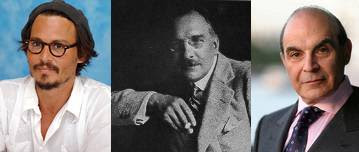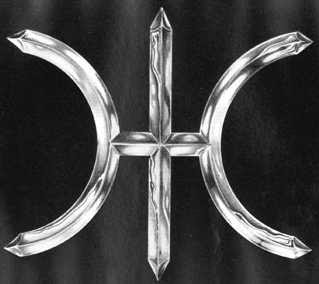My son likes to invent new toy stories formed out of other toys’ favourite bits: and so you get an Alien Pirate Dinosaur Rocket Car 6000 with Laser-Powered Misher-Masher Crab Claws (and so on). Actually, I’ve met computer games designers who work in broadly the same way, so there’s obviously some kind of pattern going on there.
But now I’ve found an awesome story, straight out of the Dan Burisch / Kirk Allen / John Titor alt.scifi universe, that completely trumps even this.
For several years, Victor Martinez has been running a website called serpo.org to facilitate (so the story goes) the release of classified alien-related documents from “Project SERPO“, under which a team of 12 astronauts apparently flew to (and returned from) Zeta Reticuli to visit the “Eben” world. Ohhhhkayyyy…
For example, SERPO release #29 describes the fabulous alien “Yellow Book” (which displays edited highlights from the history of the universe in your mind for as long as you can watch, but then goes back to the start), which is presumably what Dan Burisch (?) thought was being depicted in the VMs’ pharma section (below, with and without the blue paint):-

(I should also point out that, according to serpo.org, proponents and opponents of SERPO’s existence seem mired in an endless tape-loop of bickering, while UFO boards seem possibly even more confused than normal about this.)
But none of that matters, as SERPO release #30 (that emerged only a few days ago) has a unique quality of demented genius to it that I think makes it stand head and shoulders above the rest: and so I thought I’d share. 🙂
What is now claimed (quite independently of all the Zeta Reticuli alien stuff) is that a UFO was found in 1968 during a dig, buried within 150 million year-old rock strata: its diameter was 45 feet, it had two badly decayed 5-foot-tall aliens inside, and two small dinosaurs they had taken with them. There: I’ve used “aliens” and “dinosaurs” in the same sentence – I feel like a child again, it’s a liberating experience. 🙂
Martinez’s anonymous source then goes on to describe the spacecraft’s mysterious rock-like alien power source (but which didn’t work, of course) and the mysterious “star map” they found there too (but which nobody has been able to decipher or decode). Amazing, incredible stuff: but…
…it’s patently a crock. There would be no “star map” to decode: that’s the kind of flawed retro detail a 70 year-old delusional would insert. In fact, I would hazard a guess that 1968 had particular significance for that person: probably the year that their disturbing mental episodes started to take overl their life. The ‘alien ship’ found buried in 1968 then might well symbolically represent their pre-psychosis personality, buried under layers of delusion: while the whole story is – in a very Kirk Allen kind of way – a kind of proto-therapy, a cry for help. “Rescue and understand the aliens” then becomes a shorthand for “rescue and understand me“.
The point I’m trying to make is that even the oddest, maddest things have a human subtext, which we have a kind of moral duty to try to decode, however imperfectly: though psychiatrists and novelists instinctively understand this, the rest of us sometimes forget.


